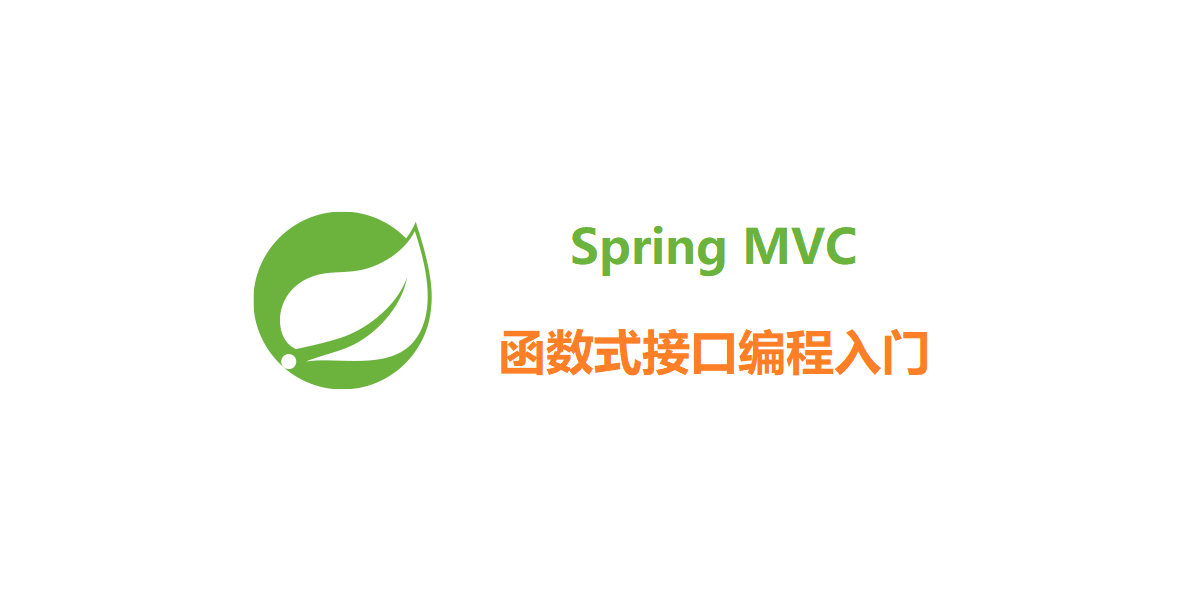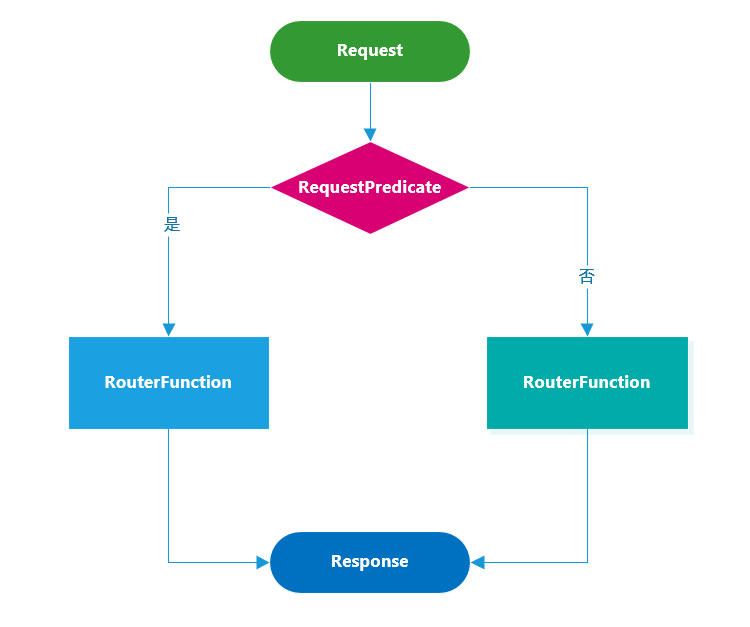
1. 前言
通常我们编写 Spring MVC 接口的范式是这样的:
@RestController
@RequestMapping("/v1/userinfo")
public class UserInfoController {
@GetMapping("/foo")
public String foo() {
return "felord.cn";
}
}
这种我都写吐了,今天换个口味,使用 Spring 5 新引入的函数式端点(Functional Endpoints)来耍耍。 这种方式同样支持 Spring Webflux。
请注意可使用该特性的 Spring 版本不低于 Spring 5.2
2. 依赖
为了演示,这里极简化只引入 Spring MVC 的 starter :
<dependency>
<groupId>org.springframework.boot</groupId>
<artifactId>spring-boot-starter-web</artifactId>
</dependency>
3. RouterFunction
在函数式端点的写法中,传统的请求映射(@RequestMapping)被路由函数(RouterFunction)所代替。上面的写法等同于:
@Bean
public RouterFunction<ServerResponse> fooFunction() {
return RouterFunctions.route()
.GET("/v1/userinfo/foo", request -> ServerResponse.ok()
.body("felord.cn"))
.build();
}
在该示例中,我使用了 RouterFunctions.route() 创建了一个RouterFunction,然后RouterFunction 提供了从请求到响应的细节操作。
4. ServerRequest/ServerResponse
ServerRequest 是对服务器端的HTTP请求的抽象,你可以通过该抽象获取请求的细节。对应的,ServerResponse 是对服务器端响应的抽象,你也可以通过该抽象构建响应的细节。这两个概念由下面的 HandlerFunction 接口进行 请求→ 响应 处理。
5. HandlerFunction
HandlerFunction 是一个函数式接口,它提供了从请求( ServerRequest)到响应(ServerResponse)的函数映射抽象。通常你的业务逻辑由该接口进行实现。从 ServerRequest 中获取请求的细节,然后根据业务构建一个 ServerResponse 响应。
HandlerFunction<ServerResponse> handlerFunction = request -> ServerResponse.ok().body("felord.cn");
6. RequestPredicate
RequestPredicate 可以让你根据请求的一些细节,比如 请求方法、请求头、请求参数等等进行断言以决定是否路由。

这里举一个例子,假如我们希望请求接口/v1/userinfo/predicate时根据不同的参数处理不同的业务,当携带参数 plan时才能进行处理。我们可以这么写:
@Bean
public RouterFunction<ServerResponse> predicateFunction() {
return RouterFunctions.route()
.GET("/v1/userinfo/predicate",
request -> request.param("plan").isPresent(),
request -> ServerResponse.ok().body("felord.cn"))
.build();
}
然后我们测试一下:
当携带参数 plan时:
GET http://localhost:8080/v1/userinfo/predicate?plan=
HTTP/1.1 200
Content-Type: text/plain;charset=UTF-8
Content-Length: 9
Date: Thu, 14 May 2020 07:57:35 GMT
Keep-Alive: timeout=60
Connection: keep-alive
felord.cn
不携带参数plan时:
GET http://localhost:8080/v1/userinfo/predicate
HTTP/1.1 404
Vary: Origin
Vary: Access-Control-Request-Method
Vary: Access-Control-Request-Headers
Content-Type: application/json
Transfer-Encoding: chunked
Date: Thu, 14 May 2020 08:00:15 GMT
Keep-Alive: timeout=60
Connection: keep-alive
{
"timestamp": "2020-05-14T08:00:15.659+0000",
"status": 404,
"error": "Not Found",
"message": "No message available",
"path": "/v1/userinfo/predicate"
}
7. 小结
函数式端点是 Spring 5 提供的一个新的接口范式风格,对于 Spring MVC 来说 Spring 5.2 才进行了支持。也是顺应函数式编程的一个未来趋势。由于篇幅原因这里仅仅对其中的关键概念进行了讲解。下一篇我们会对这种接口范式进行进一步的讲解和实际使用。敬请关注:码农小胖哥 。
关注公众号:Felordcn 获取更多资讯